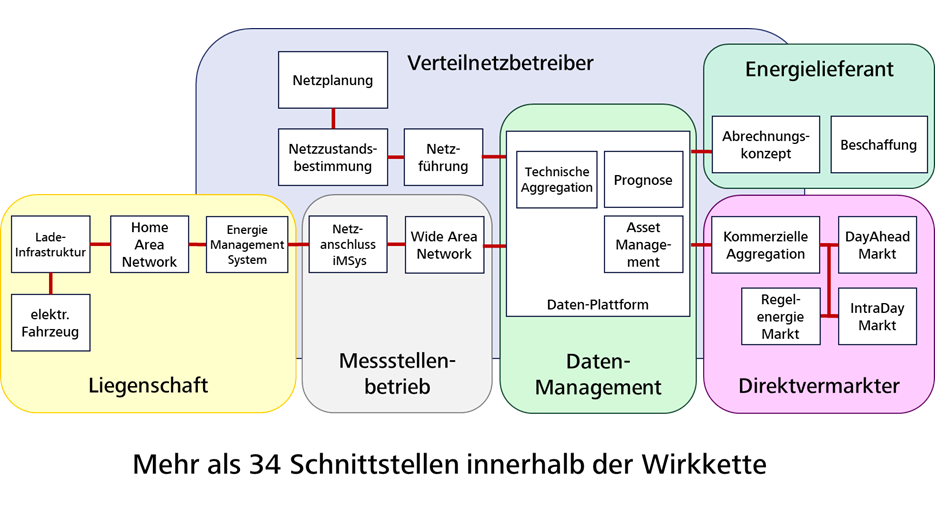Institute of Networked Energy Systems
The DLR Institute of Networked Energy Systems is developing technologies and concepts for the future energy supply based on renewable energies at its sites in Oldenburg and Stuttgart.
In the future, increasing levels of renewable energy will require more local storage in order to ensure that the energy grid remains stable in the face of varying demand and fluctuating production. Battery electric vehicles (BEV) can fulfil this function in the future. However, this can only be achieved by interconnecting vehicle batteries and the power grid in an end-to-end supply chain, establishing quick and efficient data flows and creating joint business models along the complete, bi-directional supply chain and across all stakeholders involved. The InterBDL research project, funded by the German Federal Ministry for Economic Affairs and Climate Action, links players along this value chain and brings together the charging infrastructure and automotive industry, ICT service providers, energy suppliers, grid operators, energy meteorology and BEV vehicle users with the aim of bi-directionally integrating the storage potential of BEV vehicles connected to charging points into the energy system.
Scope of the project at DLR

Technische Hochschule Ulm
From a technical perspective, bidirectional charging creates a non-linear energy flow in a virtual power plant with stationary and mobile resources. In order to establish this process in the energy system, new business models as well as adapted electricity grid modelling are required. They will form the basis of an electric grid management that may be required and of electricity trading adapted to the future grid. As a result, the expansion of the electricity grid infrastructure will be capable of facing new requirements due to climate change and further electricity end consumers.
Within the InterBDL project, the Institute of Networked Energy Systems is working on new types of information about potential charging infrastructures that can serve as a basis for the expansion of the electricity grid. This is supplemented by information from climate models on the expected changes in the meteorological conditions. In addition, improved short-term forecasts of renewable energy generation are used to regard them in an electricity trading system with bi-directional charging behaviour. The data for these forecasts is mainly derived from satellite observations, which supplement the current day-ahead and intraday forecasts.
The DLR Institute of Transport Research is responsible for forecasting future charging requirements and the transport of energy in vehicles. For this purpose, the city of Ulm/Neu-Ulm is being modelled within the agent-based transport demand model TAPAS for predicting the movement of people. The vehicle fleet's development is forecast by modelling and the resulting charging requirements and options for feeding energy back into the grid are determined. At the same time, the demand for charging capacity for the expected electrification of commercial transport is forecast on the basis of traffic and economic structural data. In this way, energy and transport research at DLR are jointly contributing to this project to investigate, test and improve the complex chain of utilisation of bidirectional charging.

